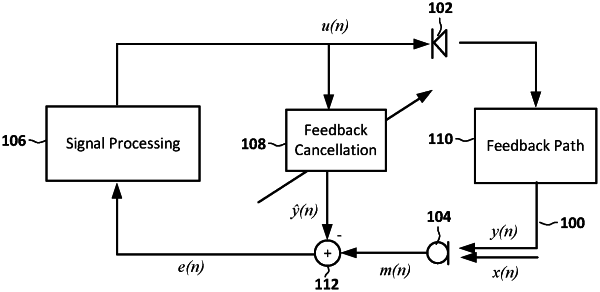| CPC H04R 25/453 (2013.01) [G10K 11/17817 (2018.01); G10K 11/17825 (2018.01); H04R 25/507 (2013.01)] | 19 Claims |

|
1. An ear-wearable device, comprising:
an input sensor that provides an input signal, the input signal being digitized via circuitry of the ear-wearable device;
an adaptive feedback canceller comprising an adaptive foreground filter that inserts a feedback cancellation signal into the digitized input signal to produce an error signal; and
an instability detector configured to extract two or more features from the error signal, the instability detector comprising a machine learning module that determines an instability in the error signal based on the two or more features, the instability in the error signal being due to at least one of: a sudden change in a feedback path of the ear-wearable device, or a transition between stationarity periods of the input signal leading to outliers in the error signal;
the instability detector changing a step size of the adaptive foreground filter in response to determining the instability, the changed step size causing the adaptive foreground filter to have a faster adaptation to perturbations in the error signal compared to a previously used step size.
|